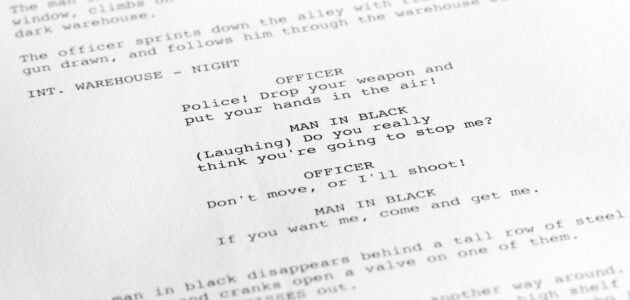
What is a ‘Side’?
‘Sides’ refers to the selections from a script that an actor is provided as material for an audition.
The term ‘sides’ dates all the way back to our friend Will Shakespeare’s day, where actors were only given their lines for rehearsals to save on paper and time – imagine old Will having to write 30+ copies of Richard III! Nowadays the term ‘sides’ refers to the pages or selections from a script that actors are given to learn for an audition. ‘Sides’ has become the industry standard term instead of ‘scenes’ – this is because often an actor will be given only part of a scene or scenes rather a full scene as audition material.
Sides are normally provided to the actor prior to the audition day from a casting agent, usually through the actor’s theatrical agent. Typically, sides will be a couple of pages. Actors are expected to be familiar with the sides when they arrive to audition. Some casting agents will allow an actor to hold the sides during the audition – some will even encourage it – but it’s good practice to become familiar with the content of the sides regardless of your preference.
So what are some key things to keep in mind when looking at your audition sides?
Often, particularly for film and television auditions, sides will be lifted directly from the spec script and marked up with a ‘start’ and ‘end’, indicating that the actor need only learn that particular section. Sometimes, the rest will even be crossed off or blacked out. However, everything on the page can still be useful material for an actor’s understanding of context, given circumstances and character background, and often actors won’t be sent any more of the script than this, so use everything to your advantage!
One thing to ask yourself is: why have they chosen this particular section for my audition? What is it they want to see? Try to think like the casting director and ask yourself what they might be looking for in this character that they chose this section for you to work on. Perhaps the character is at an emotional peak, or they are trying to charm someone, or they simply have to cry (and maybe produce actual tears!). As an actor in an audition, you want to be offering a ‘solution’ to their casting ‘problem’, so if you can identify what that problem is, you’re halfway there.
If your audition sides include two or more sections to learn, ask yourself why they’ve chosen these sections and what difference do they want to see in your characterisation between them. Does one scene have your character under pressure and the other have you at ease? Here’s your opportunity to show the casting agent your amazing range, and you’ll want to avoid performing both scenes in the same way. Again, ask yourself. Why have they chosen these two scenes for me? What are they looking for?
Finally, good film scenes (and indeed, good audition scenes!) show the character being changed in some way. Have a think about what change/s your character undergoes in the scene. Where is your character in the beginning of the scene and where do they end up? This is what the casting agent wants to see.
Well, that’s a basic run-down of sides, what they are and what to look for when you get them. For more information, check out our other guides for actors here at StageMilk!

Leave a Reply